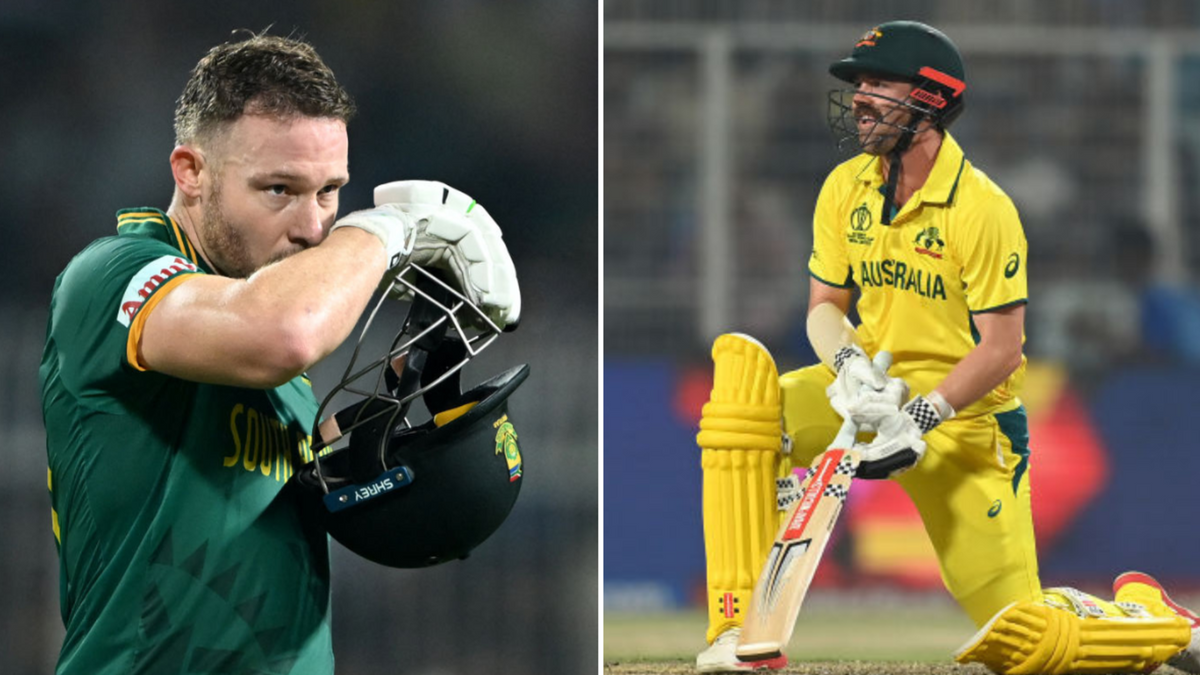
A match that had more twists than a cheap mystery thriller finally culminated in Australia’s eighth entry to a men’s ODI World Cup final, leaving South Africa with another heartbreaking knockout.
To bet on the World Cup with our Match Centre Partners bet365 head here.
There were several dramatic turns, on the pitch and in the script, as a low-scoring thriller confirmed India’s opponents for the season finale on Sunday.
Here are five turning points from a semi-final that had it all:
De Kock’s red-hot swansong ends in a whimper
Given their obvious strength in defending totals, South Africa opted to bat first, the same call Pat Cummins said he would have taken. It didn’t turn out as expected, for the ball seamed and zip around, much to Australia’s delight. Temba Bavuma, already a contentious pick due to the injury he was carrying, departed five balls in.
But it was the in-form Quinton de Kock’s dismissal, off an excellent running catch by Pat Cummins, that really signalled the kind of day it would be. South Africa had next to nothing at that point. A powerplay score of 18-2 set the tone for an underwhelming total .
Turned on its Head
Rain’s intervention gave David Miller and Heinrich Klaasen time to stall the impending slide and take a breather. Upon returning, Australia’s talisman, Adam Zampa, was pressed into action right away, but the South African duo first survived and then manoeuvred him around. It wasn’t quite his day.
When Zampa was thumped in his second spell, Australia suddenly realised they were on the other side of a rearguard action. Zampa had gone at eight an over, and while Maxwell kept things tight at the other end, a breakthrough was a requirement. On came Travis Head, wicketless so far at the World Cup.
Back-to-back fours of the first two balls indicated Zampa-like treatment, but a Klaasen misjudgement two balls later provided an incredible twist. It became two in two when No.7 Marco Jansen flunked the turn test – and it moved in a lot – suddenly shoving Australia back into the front seat.
Miller thrills, but what if?
From 22-4 to 203-8: David Miller’s counterpunch wasn’t quite Maxwell-esque, but it made a match out of virtually nothing. First with Klaasen and then by himself, Miller kept Australia at bay, creating multiple pressure release points for the innings to keep breathing. When he clattered a six off Cummins to get to three figures, 17 balls still to go, South Africa could have realistically dreamt of touching 230, maybe even 240.
But iff the next ball, a wide delivery apart, he couldn’t find the same connection, and Miller was sent back for 101. More importantly, it left the last pair with 16 deliveries to face. They survived 14, and managed nine runs. Who knows what a strong finish – a Miller finish rather – would have done to the game?
Maharaj enters late, and how
Was Maharaj introduced too late? Fourteen overs in, South Africa’s premier spinner hadn’t made an appearance. By then, Australia had motored to 106-2, and looked on course to seal a final spot with enough and more to spare. Travis Head was taking on the charge, surviving several dropped catches on his way into the 60s.
Held back until then, Maharaj emerged to turn the game around. A sharp-turner snuck through Head, leaving him on his knees and rattling the woodwork behind. Middle stump gone. Game on.
The Smith heave from bizarro world
Steve Smith had seen a lot of drama at the other end, but was playing the much-needed anchor role in the chase, surviving in defiance for over a hundred minutes. Having hit just two fours across 60-odd deliveries – one a streaky edge – Smith had his intentions set on taking this deep. With 39 to get in 100 balls, and a partnership brewing, Smith bizarrely tried to take on Gerald Coetzee, but only manage to balloon the ball in the air.
De Kock, still hoping it wouldn’t be his last ODI game, completed the skier, leaving a livid-at-himself Smith to angrily swipe the bat around in disgust. A game that seemed theirs had suddenly taken another turn. Fourtunately, better sence prevailed in Pat Cummins and Mitchell Starc, who did enough to switch off the roller coaster once and for all.








